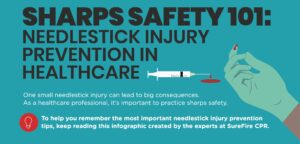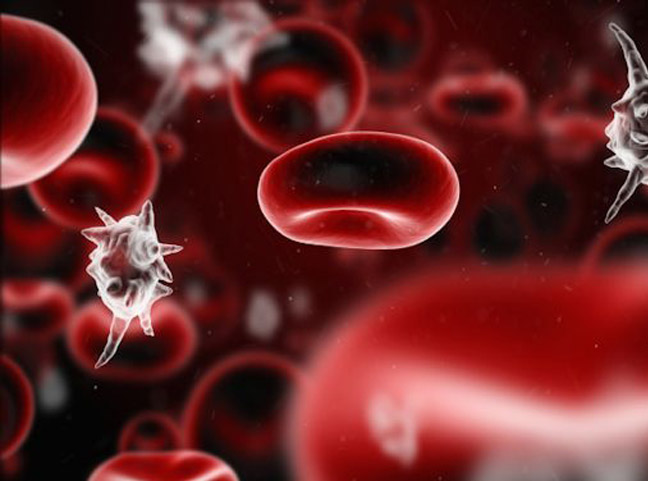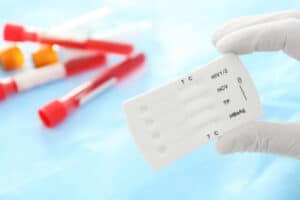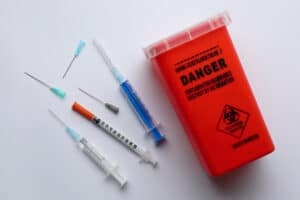
How To Prevent Needlestick Injuries in Health Care Settings
Needlestick injuries are preventable yet dangerous hazards in the medical field. A needlestick injury occurs when someone’s
Bloodborne pathogens are infectious materials that are spread through the blood. Learning about bloodborne pathogen safety is essential for any medical professional who may encounter blood or other bodily fluids on the job.

Bloodborne pathogens are infectious content within the blood that can spread viruses like HBV and HIV. These microorganisms pose a risk to healthcare workers who encounter blood and bodily fluids in the field.
OSHA’s Bloodborne Pathogens Standard protects employees who may be exposed to health hazards including bloodborne pathogens. It recommends exposure control plans, vaccinations, and other best practices.
It’s important to follow all guidelines related to bloodborne pathogens such as avoiding contact with bodily fluids, wearing personal protective equipment, and covering any existing cuts, scrapes, or sores.
Take a bloodborne pathogens certification class from a trusted educator like SureFire CPR. Once you’ve completed the course, your certification will be valid for one full year.

Getting a Bloodborne Pathogens certification is easy with SureFire CPR. We offer a self-directed online training course so you can learn at your own pace, in the convenience of your home. The course takes under an hour and you’ll receive a same-day certification for your employer.

Take the Bloodborne Pathogens online course designed for who those are at risk for on-the-job exposure.

I spent 15 years as a firefighter and paramedic, and Bloodborne Pathogen Certification is essential.
As a healthcare worker, exposure to blood and other bodily fluids is inevitable, but the spread of infection is not. Bloodborne Pathogens training ensures you can act quickly to keep yourself and others safe during critical moments. This certification will teach you how bloodborne pathogens are spread, how to avoid exposure, and what to do if you are exposed –– knowledge that could save a life.


Needlestick injuries are preventable yet dangerous hazards in the medical field. A needlestick injury occurs when someone’s

In any situation involving potential contact with another person’s blood or bodily fluids, exercising caution is paramount.

Needles and other contaminated sharps can spread bloodborne pathogens such as human immunodeficiency virus (HIV), hepatitis B
The top three most common bloodborne pathogens are Hepatitis C (HCV), Hepatitis B (HBV), and human immunodeficiency virus (HIV).
Personal protective equipment (PPE) can help prevent the spread of bloodborne pathogens.
If equipment or work surfaces have become exposed to blood or other bodily fluids, you can sanitize the area with a disinfectant solution.
If you are exposed to bloodborne pathogens, the first thing you should do is thoroughly wash your injury, cut, or exposed skin with soap and water.